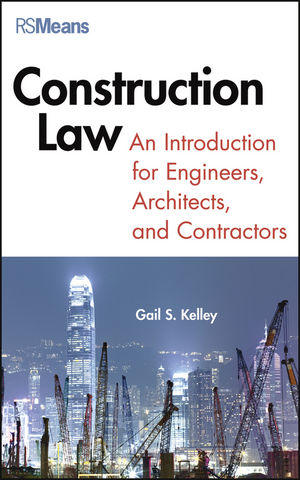Union Pension Plans: Financial Risks and Liability Considerations

Along with underfunded corporate and public pensions, many union pensions are massively in the red. For employers who have union workers who participate in these types of multi-employer pension plans, the growing liability involved with withdrawing from pension funds presents a serious issue.
these types of multi-employer pension plans, the growing liability involved with withdrawing from pension funds presents a serious issue.
According to the Financial Times, the current shortfall in multi-employer pension plans is $369 billion. Union funds have been hammered by unwise investments and overly generous benefits, which has created significant shortfalls in the amount of money that many pension funds have versus the amounts they have promised their members.
In 2011, the U.S. Department of Labor issued “critical status” notices, meaning that the funding percentage of the plan was 65 percent or less, or that there would be a cash-flow crisis within three to six years, to more than 180 union pension plans. Another 116 plans received “endangered status” notices, meaning that either the funding percentage is 80 percent or less or they face funding deficiencies within the next six years. Plans on the critical and endangered lists are not limited to one industry or only to those plans small in size or participants; they include a range of sizes, industries and geographic locations.
In an IRS newsletter, Monika Templeman, Director of Employee Plan Examinations, pointed to several funding issues that IRS agents find when they examine multi-employer pension funds, including several employer-related ones. “The issues occurring most often include trustees not pursuing receipt of delinquent contributions from employers, diversion of trust assets, and trustees not assessing withdrawal liability to withdrawing employers or not assessing it in a timely manner,” she said.
Considering the funding shortfalls, uncertain economy and federal government’s emphasis on ensuring that employers be assessed and pay any withdrawal liability, companies should be on notice of possible consequences if they completely or even partially withdraw from union pension funds.
Pension Fund Withdrawals
Multi-employer pension funds are required to collect withdrawal liability amounts from employers when companies terminate or decrease their contribution obligations for any reason. Essentially, it’s an “exit penalty” assessed against employers. The fiduciaries of the plan determine how much the liability is, notify the employer of that amount and then collect the liability, using lawsuits if necessary.
Withdrawals from union pension plans can be extraordinarily expensive. In 2007, it cost UPS $6.1 billion to withdraw from the Central States Pension Plan, after the ratification of a long-term national master agreement with the International Brotherhood of Teamsters.
There are several different types of withdrawals that trigger liability, including complete, partial and mass:
• Complete withdrawal:Under the Employee Retirement Income Security Act (ERISA), a complete withdrawal occurs when the employer permanently ceases to have an obligation to contribute to the plan or permanently ceases all covered operations under the plan. The law does offer some protection to an employer that temporarily suspends contributions during a labor dispute with its workers, such as strikes and lockouts.
• Partial withdrawal: Some employers may consider gradually decreasing their contributions to a multi-employer pension plan. However, ERISA rules have taken that into consideration, and a partial withdrawal can trigger liability. A partial withdrawal occurs when the employer’s “contribution base units” decline by 70 percent or more, or the employer partially ceases their contribution obligations.
• Mass withdrawal:A mass withdrawal takes place when all the contributing employers withdraw from a plan and the plan is terminated. Employers who withdrew within three years of the termination will still be considered part of the mass withdrawal for liability purposes.
Recent Court Ruling
For employers looking to withdraw from union pensions with a minimum of exposure, the options have been very limited. However, a recent court ruling offers some hope. In Shelter Distribution, Inc. v. General Drivers, Warehousemen & Helpers Local Union No. 89, the U.S. Court of Appeals for the Sixth Circuit ruled there is nothing in the law that prohibits employers from including an indemnification clause against withdrawal liability in a collective bargaining agreement (CBA) with a union.
In that case, Shelter and the union agreed as part of the CBA that the union would “indemnify the Company for any contingent liability which may be imposed” under the Multi-employer Pension Plan Amendments Act (MPPAA). According to the language of the agreement, Shelter would still have to pay the withdrawal liability, but it could then seek reimbursement from the union.
During negotiations for the next CBA, the union disclaimed representation of Shelter’s employees and terminated the collective-bargaining process. Shelter then withdrew from the pension plan, The Central States, Southeast and Southwest Areas Health and Welfare and Pension Fund, which charged a withdrawal liability of $57,291.50 against Shelter. Shelter paid, then demanded indemnification according to the terms of the CBA, which the union refused to pay.
During arbitration, the union claimed that the indemnification clause was void when the CBA expired and that the provision for arbitration was unenforceable because it violated public policy. The arbitrator rejected both arguments, and the union took the matter to court. The district court agreed with the arbitrator. However, on appeal, the Sixth Circuit ruled that the indemnification clause did not violate public policy, finding that the primary goals of MPAAA and ERISA could still be served even in light of such an indemnification agreement.
What to Do Now
In the face of massively underfunded union pensions and burdensome legislation, companies need to understand the financial implications involved with multi-employer pension plans and withdrawal liability, whether their employees vote to unionize, the company purchases a company with unionized employees, creates a unionized division to bid for union work or takes any actions that could trigger a complete or partial withdrawal from a union fund.
• The implications of participating in a multi-employer fund or entering into a CBA: Before beginning contributions to a multi-employer union pension fund, employers need to understand what is involved in leaving one, and have a solid exit strategy in place. Withdrawal penalties can be extremely expensive, and payments can drag on for years. When companies consider different scenarios that could lead to union pension fund contributions, they should consult with outside counsel who understand the issues and can explain exactly what the business and financial implications will be, and how the company can best protect itself.
When companies are entering into a new CBA, they should carefully consider the ruling in the Shelter case. That ruling only stands in the Sixth Circuit, but arbitrators and other courts may consider it when ruling in similar situations. Companies should make indemnification clauses a very high priority during negotiations, if there is even a chance they may withdraw from the pension fund before the next CBA. The language of these provisions should be explicit, and should specifically state that the duty to indemnify extends beyond the expiration of the CBA.
Some companies create “double-breasted” operations, where one group is unionized and one is not. While this allows employers to provide both a union and non-union workforce, it can create union pension exposure. The non-union part of the company can get sucked into the pension obligations of the union counterpart. Companies should look very closely at how the ownership and financial controls are structured, how management is involved in both areas and how integrated the operations are. Companies should work closely with counsel and HR to make sure the appropriate level of distance exists between the two companies, which will minimize the risk of withdrawal liability.
• The implications of withdrawing from a plan: Employers may not even have a choice about completely or partially withdrawing from a multi-employer union pension plan. Employees can vote to leave the union, businesses may have to lay off union employees or the company may merge with another company.
Employers need to carefully monitor changes in union activity, declines in business that could lead to layoffs or possible mergers and acquisitions. Before entering into any kind of merger, acquisition or other relationship with a unionized business, employers need to understand if the CBA requires them to contribute to a multi-employer pension plan for union employees. Depending on the answer, the company may want to reconsider the structure of the transaction or even rethink it completely.
Withdrawal liability is expensive and time-consuming. Any company that is involved in multi-employer pension plans needs to understand its exposure to the liability and how best to minimize and manage that exposure.
Looking for a reprint of this article?
From high-res PDFs to custom plaques, order your copy today!








